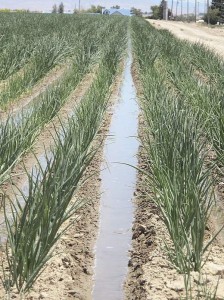Idaho and Oregon onion growers say they can live with the water quality provisions included in the FDA’s final produce safety rule, which was released Nov. 13.
 Two years ago, they were worried the proposed water quality provisions in FDA’s originally proposed produced rule could put them out of business. But industry officials said the FDA heard their concerns and re-wrote the rule in a way that onion growers are OK with.
Two years ago, they were worried the proposed water quality provisions in FDA’s originally proposed produced rule could put them out of business. But industry officials said the FDA heard their concerns and re-wrote the rule in a way that onion growers are OK with.
To go from a rule that would have seriously impacted the economics of the onion industry “to a rule that’s livable for us and allows us to stay in business is a huge victory,” said Kay Riley, chairman of the Idaho-Eastern Oregon Onion Committee.
When FDA first proposed its produce safety rule in 2013, it included water quality standards limiting how much generic E. coli bacteria could be present in agricultural water.
If the water didn’t meet those standards, farmers had to immediately stop using it. Virtually none of the surface water used by onion growers in Eastern Oregon and Southwestern Idaho meets those standards.
The water quality standards still exist in the final rule.
But FDA altered them to allow growers to meet the standards, even if their water exceeds the minimum bacteria levels, if they can show through scientific evidence that bacteria dies off at a certain rate from the last day of irrigation until harvest.
The bulb onions grown in this region are left in the field to dry for a few weeks following harvest. Field trials by Oregon State University researchers have shown these onions will meet the so-called die-off provisions.
“The thing that’s great about it is they actually listened to us,” Riley said. “I would deem it a tremendous victory compared to what it could have been.”
But the final rule still requires farmers to test their water annually, even if they meet the die-off provisions. Onion growers say the testing will be costly and time-consuming and they hope to be able to skip them.
“They are still going to require testing and that’s going to be the hardest thing to deal with,” said Stuart Reitz, an OSU cropping systems extension agent in Ontario. “The final rule is not ideal but it’s not that bad. It’s one onion growers can live with.”
